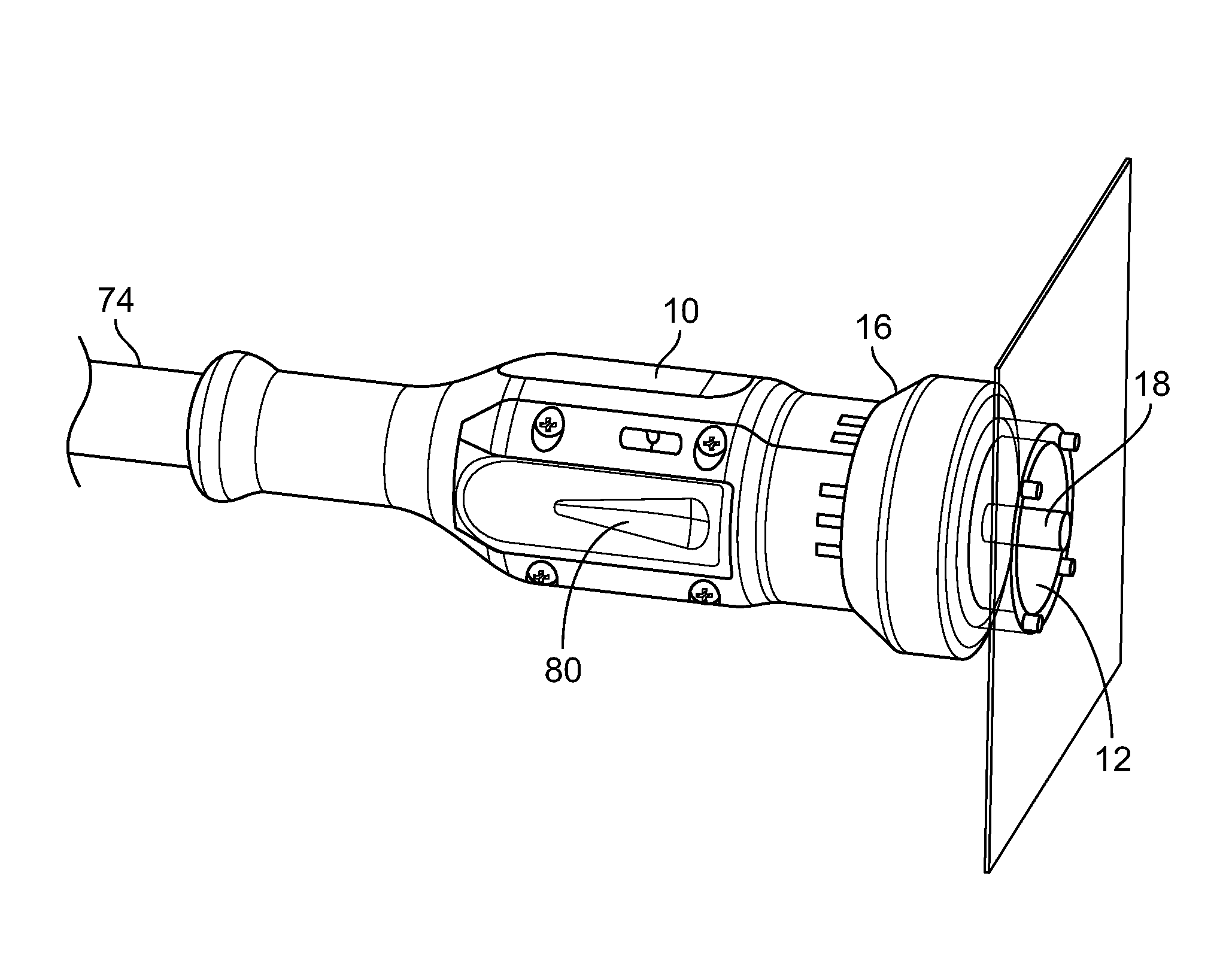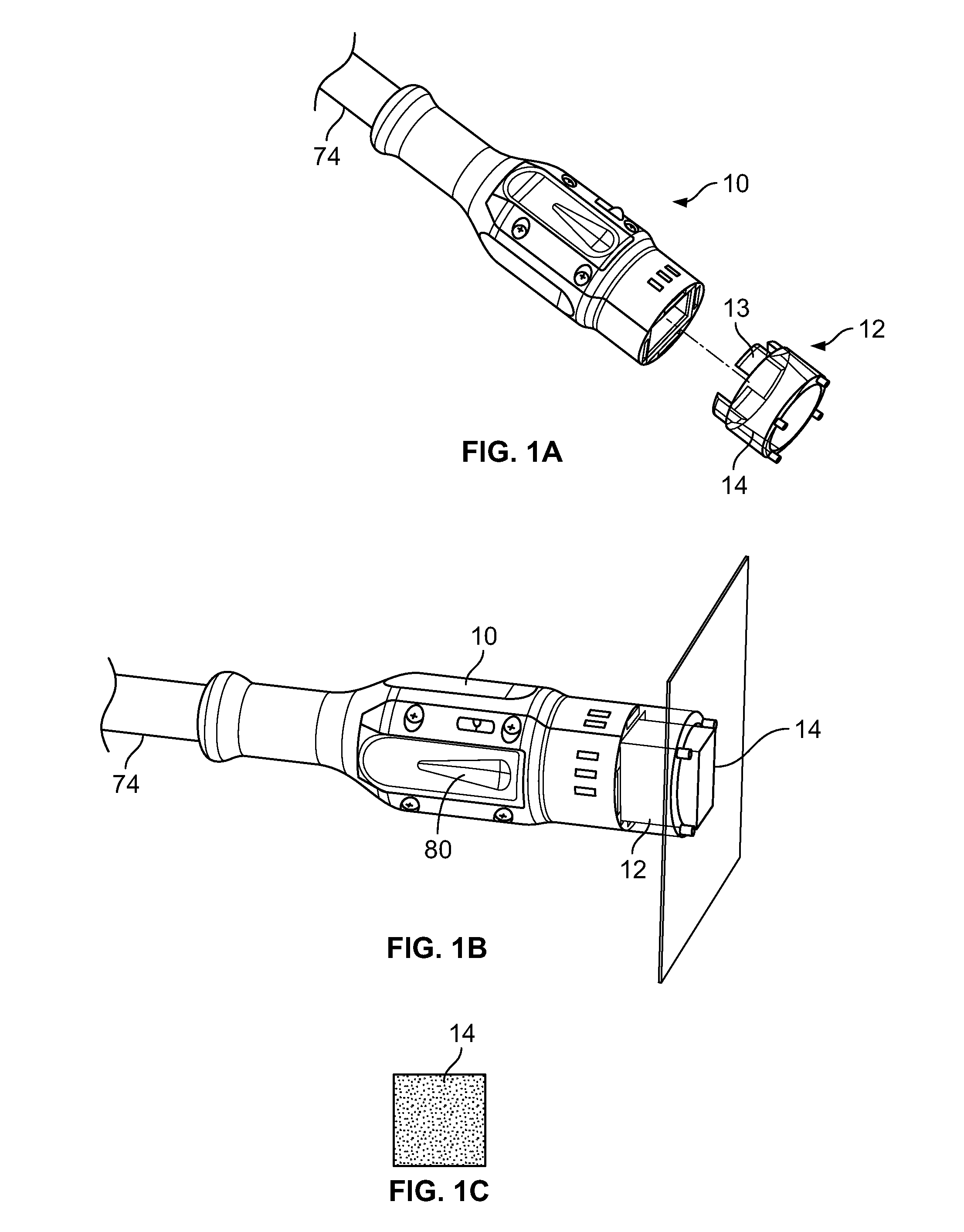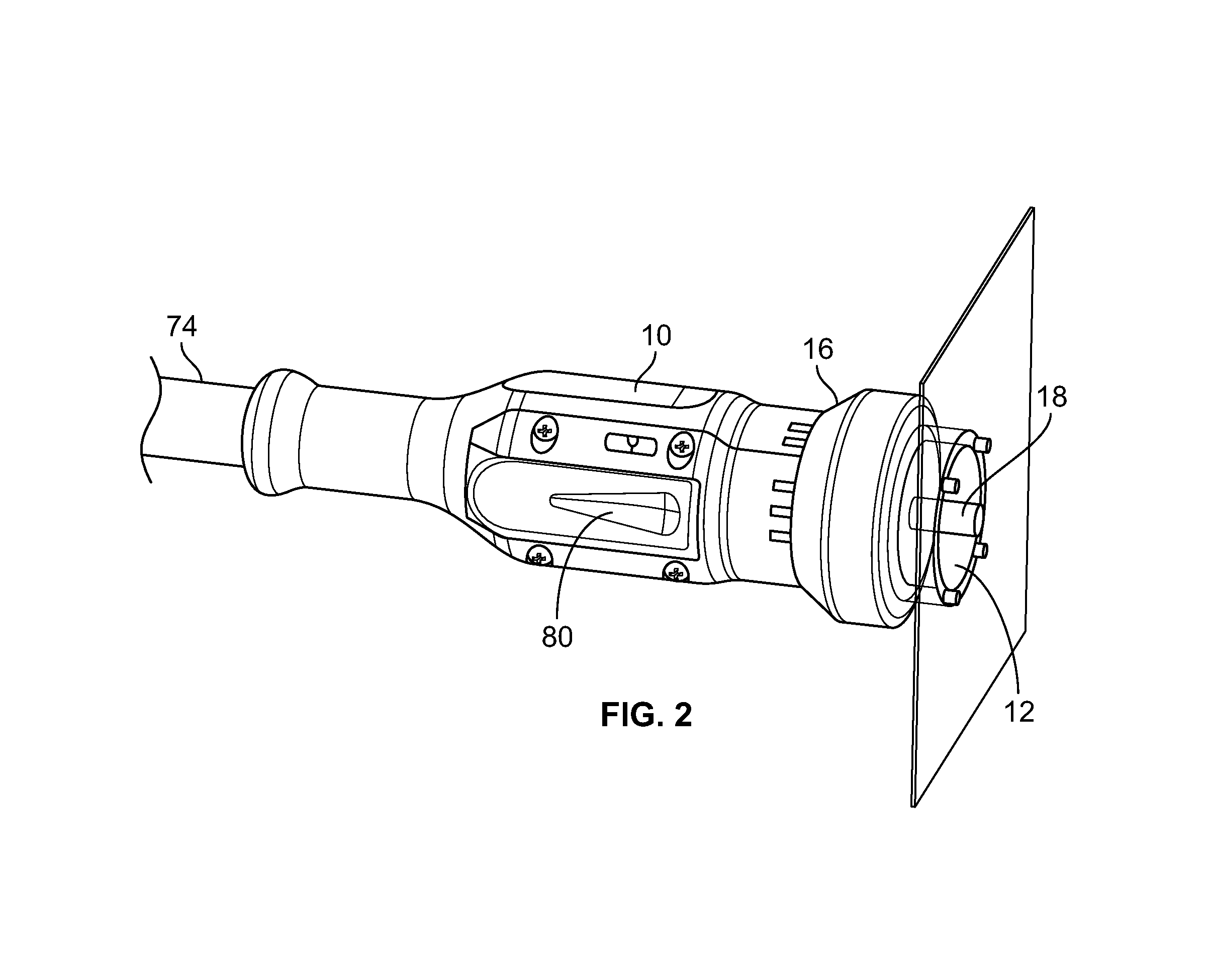Device for targeted treatment of dermatoses
a skin condition and phototherapy technology, applied in the field of targeted phototherapy treatment of skin conditions, can solve the problems of profound negative impact on the quality of life psychological stress, and substantial morbidity of individuals suffering from skin conditions, and achieve the effect of reducing the overall number of treatment sessions required to place an individual's skin condition into remission and facilitating the treatment of skin conditions
- Summary
- Abstract
- Description
- Claims
- Application Information
AI Technical Summary
Benefits of technology
Problems solved by technology
Method used
Image
Examples
Embodiment Construction
[0025]With reference now to the drawings, FIG. 1A through FIG. 1C illustrate an embodiment of a delivery apparatus 10 and an tip 12 that is connectable thereto to deliver a beam of light 14 that is dispensable from the delivery apparatus 12 into a desired shape so as to apply targeted phototherapy as a treatment modality onto the skin of an individual suffering from a skin condition. As shown in FIG. 1A, the tip piece 12 includes a plurality of tabs 13 that extend from one end of the tip piece 12 in a first direction and that are configured to releasably connect the tip piece 12 to the laser delivery apparatus 10.
[0026]As shown in FIGS. 1B and 1C, in an embodiment, the tip piece 12 can size and dispense a square beam 14 of light from the delivery apparatus 10 that can be, for example, 2 cm by 2 cm. An end view of such a square beam 14 of light is illustrated in FIG. 3C.
[0027]As depicted in an embodiment in FIG. 2, the hand-held phototherapy delivery apparatus 10 and the tip piece 12...
PUM
 Login to View More
Login to View More Abstract
Description
Claims
Application Information
 Login to View More
Login to View More - R&D
- Intellectual Property
- Life Sciences
- Materials
- Tech Scout
- Unparalleled Data Quality
- Higher Quality Content
- 60% Fewer Hallucinations
Browse by: Latest US Patents, China's latest patents, Technical Efficacy Thesaurus, Application Domain, Technology Topic, Popular Technical Reports.
© 2025 PatSnap. All rights reserved.Legal|Privacy policy|Modern Slavery Act Transparency Statement|Sitemap|About US| Contact US: help@patsnap.com



